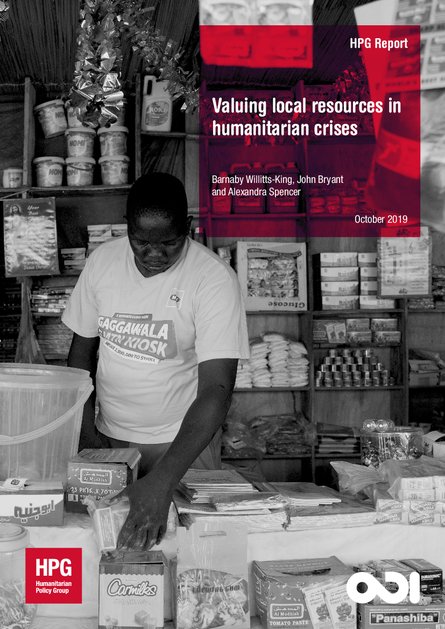
HPG’s research into the resources that households use to cope with crisis has revealed the narrow way that humanitarian agencies have been looking at resource flows. Locally led response starts in affected communities and the resources they mobilise and make use of, including community support mechanisms, remittances from diaspora, government and private sector funding, and faith-based giving. But these funds and other resources are not easily measured or tracked and are not sufficiently understood by local and international humanitarian actors.
Globally, this study estimates that international humanitarian assistance comprises as little as 1% of resource flows to countries affected by humanitarian crises. Remittances are one clear example of a major resource flow that is potentially significant in crises but insufficiently understood or factored in; others include faith-based flows and local community resources.
Why does this matter? If international aid is only 1–2% of what people receive, then it needs to be managed in a much more complementary way and in better alignment with other resource flows to address the real needs faced by people in crisis. For example, international aid might focus on health needs, the most vulnerable, or catalysing business recovery to complement the typical focus of local aid on food and shelter.
This means shifting perspectives from one with international resource flows at the core to one where households and affected countries are at the centre of how responses are planned and funded. Aid should be used not just to respond to gaps in need but to catalyse better and more effective use of flows beyond aid, which may be the best way to ‘localise’ the response.
The humanitarian community should:
- Focus on the household perspective in resource analysis and tracking by investing in household economy, market and political economy analysis.
- Design programming specifically for each crisis.
- Use aid smartly to focus on gaps and catalyse the right kind of investments and flows (for example, through supporting entrepreneurship or facilitating remittances).
- Build wider resource awareness into other systems.
- Better needs assessments are required that incorporate livelihoods and political analysis and involve government.
- Strengthen data literacy and data systems and develop a better understanding of how data is used to support humanitarian action.
- Build a community of practice on all-resource tracking.
